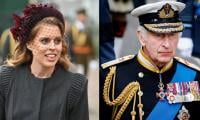Mapping the conditions of women and children in Pakistan
In 2020, the UN Secretary-General Ant—nio Guterres’ delivered remarks on “Women and Power” at The New School in New York:
“The women’s rights movement came of age in the twentieth century. Women Heads of State dispelled any doubts about women’s ability to lead. The Universal Declaration of Human Rights asserted the equal rights of men and women, and the Convention on the Elimination of All Forms of Discrimination against Women outlined a vision of gender equality.
Today, young women like Malala Yousafzai and Nadia Murad are breaking barriers and creating new models of leadership.
However, despite these advances, the state of women’s rights remains dire. Inequality and discrimination are the norms, everywhere. Progress has slowed to a standstill - and in some cases, been reversed.”
It is a good moment to go through our history for a reasoned analysis of how we got here and what might be done to improve the situation. In doing so, we may focus on three chief areas:
Literacy and education
Most importantly, there has been underinvestment in female education and health during the last 75 years and it has had deleterious effects not only on women themselves but on children and future generations as well. The problem is more pronounced in rural areas of Pakistan where low level of education and lack of awareness and access to medical facilities pose a major threat to the development of a healthy and productive society. The dominant cultural notions regarding women are also instrumental in hampering women’s access to education, information and other structures of power.
The parts that now constitute Pakistan were among the least developed regions of India and the rest of the world prior to 1947, and the last to be conquered by the British, according to the eminent economist Dr Kaiser Bengali. The British rule in Sindh, Balochistan and NWFP lasted a century and these regions were considered the periphery of the British Raj in India. At the time of the first census in 1950, the overall literacy rate was 20 per cent in India and 14 per cent in Pakistan, according to UNESCO. As of 2012, India has achieved a 75 per cent literacy rate while Pakistan is at 58 per cent (Pakistan Standards of Living Measurements (PSLM) survey, 2011-12). Pakistan Youth (15-24 years) literacy rate is 79.1% for males and 61.5% for females. As of 2010, there are 380 out of every 1000 Pakistanis aged 15 and above who have never had any formal schooling. Of the remaining 620 who got enrolled in schools, 22 dropped out before finishing primary school, and the remaining 598 completed it. Out of every 1000, only 401 Pakistanis made it to secondary school; 290 completed secondary school while 111 dropped out. Only 55 made it to college out of which 39 graduated with a degree.
There are two systems of education prevalent in Pakistan: the traditional religion-based education system and the modern formal education system that began under British colonial rule and continued after the country’s independence. Both systems are financed by the Ministry of Education, although the scrutiny by the government of standards of the modern education sector is far stricter than for the madrassahs. Since the late 1970s, with the increasing Islamisation of Pakistan’s polity and society, the management of the traditional institutions has been under the control of mullahs both at the provincial and the federal levels. This was partly supported by the fact that the madrassahs were financed out of the zakat, the Islamic tithe collected by the government.
With the upheaval in Afghanistan during the early 2000s, the Taliban and many of its fighters sought refuge in Pakistan. They enforced strict codes of conduct in the areas they controlled and restricted the freedom of women and put a ban on girls from attending schools. This action worsened the already deteriorating education system in Pakistan, with over 5.5 million primary school-aged children out of school of which 63 per cent are girls. According to a UNESCO’s 2014 report, Pakistan has the second highest number of out-of-school children in the world. While the government of Pakistan has legislated education for all, Gender Concerns International (GCI) and other NGOs have noted that education remains drastically under-funded at only 2.5 per cent of the country’s GDP in 2013, despite a government commitment of 4 per cent. In recent years, the plight of girls’ education has been highlighted by various NGOs, action groups and notably by Malala Yousafzai, who was shot by the Taliban in 2012 for attempting to attend school.
Health and population status of women and children
In Pakistan, during the 1940s, population growth rates began to accelerate because of some improvement in the health system which increased the life expectancy, however, birth rates still remained high. In 1947, at the time of independence, Pakistan’s population was 31 million. By 1995 it escalated to 140 million. Family planning programmes were started in the 1950s and 1960s by private and government institutions. International donors such as the World Bank along with the government of Pakistan funded the programmes for family planning (FP). For years these institutions focused only on women as it was thought that FP was only women’s responsibility.
Nothing improved in the following years and now with a population of 221 million people, it is currently the world’s seventh largest country and will become the third biggest contributor to world population growth. According to the United Nations projections, the Pakistan’s population will grow to over 380 million by the year 2050, surpassing the United States, Indonesia, Brazil and Russia and becoming the world’s third largest country after India and China. With its highest population growth rate, Pakistan will certainly experience dramatic declines in the per capita availability of arable land, water, and forest resources. Already rapid population growth at three per cent per year is eroding economic gain.
The water availability in Pakistan has plummeted from about 5,000 cubic meters per capita in the early 1950s to less than 1,100 m3 per capita in 2011. According to the World Bank Water and Sanitation Specialist, the absence of a safe water supply at or near their homes-and the resulting need to walk up to 4 kilometres or more to get water each day-has aggravated the burden of women’s duties in many ways, making them vulnerable in terms of both their health and personal safety.
Political rights of women
The political history of Pakistan from 1947 to 1970 reveals that the first constituent assembly of Pakistan was constituted from within the Indian legislature elected in the 1946 elections. After its dissolution the second assembly came into being as a result of an indirect election; nevertheless, at the provincial level, election based on the adult franchise were held in East Bengal (subsequently East Pakistan and now Bangladesh) in 1954, in 1953 in Sindh, in 1951 in Punjab and NWFP (now Khyber Pakhtunkhwa) respectively. It was only in 1970 when after the imposition of martial law in 1969, General Agha Muhammad Yahya Khan for the first time, held country-wide general elections based on the adult franchise which was contested by nine women as independent candidates but all of them lost. However, it was the first time that women actively participated in politics.
The first Constituent Assembly of Pakistan was composed of 69 members, with two women Begum Shaista Suhrawardy Ikramullah and Begum Jahanara Shahnawaz who served from 1947 to 1954. There was no representation of women in the second constituent assembly which had 72 members who served from 1955 to 1958.
While women’s representation remained low in the first and second constituent assemblies, the amendments in the Constitution of Pakistan paved the way for their increased participation in the parliament. Moreover, the progressive laws helped improve their participation in legislative and executive positions over the years. Since 2002, women politicians have had notable representation in the federal as well as provincial assemblies. The successive governments and the parliamentarians have contributed to ensuring women’s representation in the legislative bodies. The Constitution of Pakistan of 1956 reserved ten seats for women in the unicameral parliament with five seats each from East and West Pakistan. The Constitution of Pakistan of 1962 reserved six seats for women in the national assembly with three seats each from East and West Pakistan. The Constitution of the Pakistan of 1973 reserved ten seats for women for ten years from the commencing day of the Constitution to the holding of the third general elections to the national assembly, whichever occurred later. In 1985, ten seats were increased to twenty whereas, the reserved seats for women were increased to sixty in 2002 during the era of General Pervez Musharraf. Various provisions of the 1973 Constitution of Pakistan affirm the state’s resolve to minimise gender disparity by eliminating discrimination based on gender and encouraging the participation of women in all walks of life. Article 17 (2) of the constitution provides every citizen with the right to form or be a member of a political party. Article 34 of the Constitution emphasizes the full participation of women in national life and states that “steps shall be taken to ensure full participation of women in all spheres of national life”. To implement the fundamental rights guaranteed in the constitution, substantive amendments in the constitution, as well as election laws, are made to ensure increased participation of women in the political process. For instance, 60 seats for women are reserved in the national assembly under Article 51 and 17 seats are reserved in the Senate of Pakistan under Article 59, while there are 168 seats for the provincial assemblies ie Balochistan (11), Khyber Pakhtunkhwa (26), Punjab (66) and Sindh (29) under Article 106 of the constitution. Similarly, the Elections Act of 2017 directed the political parties to ensure at least five per cent representation of women candidates when fielding candidates for general seats, which is a progressive development to encourage representation of women in legislative bodies.
The preamble of the constitution of Pakistan supports democratic principles and guarantees the fundamental rights of all citizens. Under the interim constitution, women were granted suffrage in 1947 and this right has been reaffirmed in the national elections of 1956. One of the most well-known examples of female political leadership in Pakistan is the two-time female Prime Minister Benazir Bhutto. In 1988, Bhutto won the elections and became the first woman to be elected as the head of an Islamic state government. However, many women in Pakistan still face social, religious, economic and political obstacles. An example is a parliament, which since 2013 has only 20.6 per cent (70 out of 340) of women in the lower house, whilst in the upper house, this percentage is even lower at 18.3 per cent (19out of 104).
During these 75 years, economic crisis and structural adjustment adversely affected women in their roles as producers, household managers, and mothers. Women’s participation in the workforce has almost doubled in 22 years (1992-2014) but the increase isn’t happening fast enough.
Some recent developments
ADB 2016: Policy Brief on Female Labour Force in Pakistan
Despite increase in recent years, female labour force participation in Pakistan, at 25 per cent, is well below rates for countries with similar income levels. Even among women with high levels of education, labor force participation lags: only around 25 per cent of women with a university degree in Pakistan are working. This low female labor force participation represents a major loss of potential productivity.
Rural Women in Pakistan Status Report 2018 UN Women Pakistan
The returns to labour for women in agriculture are low; the large majority work as unpaid contributing family workers while those who do paid work are given a pittance for what is considered strenuous work such as cotton picking, stripping leaves of sugarcane stalks, transplanting rice etc.
IMF Report 2020
According to the IMF staff report, women in most countries do not have same opportunities as men have to participate in economic activities.
In 21 countries, including India, Pakistan, and Egypt, female labour force participation was below 30 per cent. The global rise in female labour force participation has been driven mostly by changes in advanced economies and emerging markets. In 2018, advanced economies as a group had the highest female labour force participation rate, at 70 per cent, which reflects an increase of 12 percentage points over the past two decades.
Globally, about one-quarter of countries have experienced declining female labour force participation. Countries such as India and Sri Lanka faced an average annual decrease of 1 per cent between 1990 and 2018, whereas Pakistan, Peru, and Spain experienced average annual increases of 2 per cent.
Global Gender Gap Report - WEF 2022
Pakistan is the second worst country in the world in terms of gender parity, ranking 145 out of 146 countries in the Global Gender Gap Index Report released by the World Economic Forum in July 2022.
Pakistan is the country where women have the smallest share of senior, managerial and legislative roles (4.5 per cent), compared to Jamaica, where women represent 56.6 per cent of workers in that category, or Togo, which has the highest share of women in senior roles, at 70.1 per cent
According to the Pakistan Social and Living Standards Measurement (PSLSM) district level survey 2019-20, “the literacy rate of population (10 years and above) is stagnant at 60 per cent in 2019-20 since 2014-15.”
The cumulative education expenditures by the federal and provincial governments in FY2020 stood at 1.5per cent of the GDP compared to 2.3 per cent in FY2019-20. Expenditures on education had been rising gradually till 2018-19 but in 2019-20 it witnessed a decrease of 29.6 per cent - from Rs868 billion to Rs 611 billion.”
The Global Education Monitoring Report, 2022, released by UNESCO on Wednesday estimates that globally 771 million adults lacked basic literacy skills in 2020, among which 98 million were aged 15 to 24.
The annual gender report of the UN’s specialised agency says females accounted for 63 per cent of all adult illiterates and 55 per cent of young illiterates. Among adults, 83 per cent of women and 90 per cent of men were literate, a gap of 7 percentage points, whereas the gender gap was only two percentage points among youth.
In Pakistan, only one girl achieves the top proficiency level for every three boys but the absolute gap between them is only 0.1 percentage points because overall performance levels are low.
-
 Sarah Ferguson Considers Unique Surgical Approach To Seeking Forgiveness For Epstein Fiasco
Sarah Ferguson Considers Unique Surgical Approach To Seeking Forgiveness For Epstein Fiasco -
 Prince Harry, Meghan Markle Face Fresh Scrutiny Over Christmas Family Photo
Prince Harry, Meghan Markle Face Fresh Scrutiny Over Christmas Family Photo -
 Watch: Kate Middleton Promises An Extra Special Something For Together At Christmas
Watch: Kate Middleton Promises An Extra Special Something For Together At Christmas -
 Kim Kardashian Goes Incognito On Holiday Ski Trip, Fans Can’t Recognize Her
Kim Kardashian Goes Incognito On Holiday Ski Trip, Fans Can’t Recognize Her -
 King Charles Gives A History Lesson To Royal Fans Ahead Of Christmas Broadcast
King Charles Gives A History Lesson To Royal Fans Ahead Of Christmas Broadcast -
 How King Charles Is Reacting To Abdication Rumours, Prince William's Succession Talks?
How King Charles Is Reacting To Abdication Rumours, Prince William's Succession Talks? -
 Space Race Intensifies As Russia Plans Lunar Nuclear Power Plant By 2036
Space Race Intensifies As Russia Plans Lunar Nuclear Power Plant By 2036 -
 Italy Orders Meta To Suspend WhatsApp Terms Prohibiting Rival AI Chatbots
Italy Orders Meta To Suspend WhatsApp Terms Prohibiting Rival AI Chatbots -
 Serena Williams Surprises Sister With Most Expensive Wedding Gift
Serena Williams Surprises Sister With Most Expensive Wedding Gift -
 Kris Jenner Names Kardashian-Jenner Who Is The ‘hardest’ To Get Gifts For
Kris Jenner Names Kardashian-Jenner Who Is The ‘hardest’ To Get Gifts For -
 Should Meghan Markle, Prince Harry Return To The UK For Christmas? Royal Fans Give Verdict
Should Meghan Markle, Prince Harry Return To The UK For Christmas? Royal Fans Give Verdict -
 Prince Harry, Meghan Markle Emotional Moment With Injured Dog Revealed
Prince Harry, Meghan Markle Emotional Moment With Injured Dog Revealed -
 Scientist Find New Clue To Spot Mental Health Risk
Scientist Find New Clue To Spot Mental Health Risk -
 UFO Expert Makes Startling Revelation About Interaction With Aliens
UFO Expert Makes Startling Revelation About Interaction With Aliens -
 Prince Harry 'determined' To Secure Stable Future For Archie, Lilibet Away From Crown
Prince Harry 'determined' To Secure Stable Future For Archie, Lilibet Away From Crown -
 Trump Flew On Epstein Jet Eight Times In 90s, Prosecutor Email Claims
Trump Flew On Epstein Jet Eight Times In 90s, Prosecutor Email Claims



